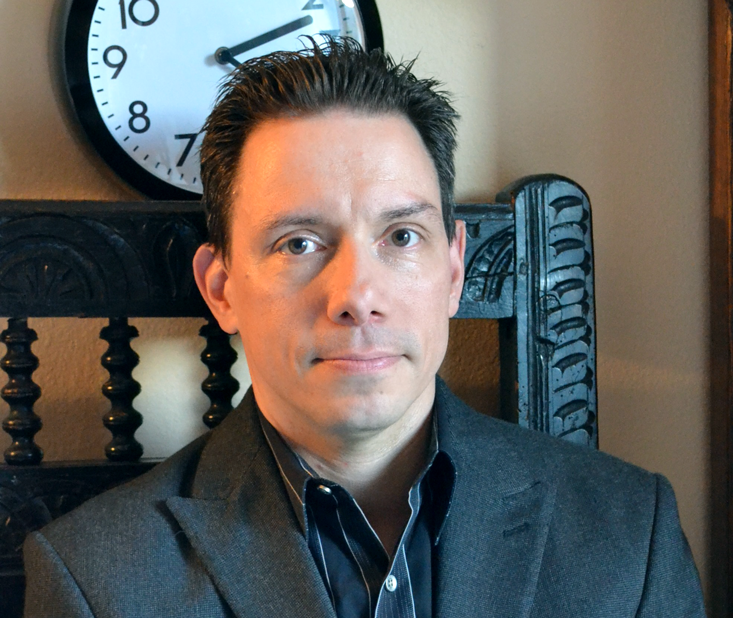In 1979, psychologist Ellen Langer and her students carefully refurbished an old monastery in Peterborough, New Hampshire, to resemble a place that would have existed two decades earlier. They invited a group of elderly men in their late 70s and early 80s to spend a week with them and live as they did in 1959, “a time when an IBM computer filled a whole room and panty hose had just been introduced to U.S. women,” Langer wrote. Her idea was to return the men, at least in their minds, to a time when they were younger and healthier—and to see if it had physiological consequences.
Every day Langer and her students met with the men to discuss “current” events. They talked about the first United States satellite launch, Fidel Castro entering Havana after his march across Cuba, and the Baltimore Colts winning the NFL championship game. They discussed “current” books: Ian Fleming’s Goldfinger and Leon Uris’ Exodus. They watched Ed Sullivan and Jack Benny and Jackie Gleason on a black-and-white TV, listened to Nat King Cole on the radio, and saw Marilyn Monroe in Some Like It Hot. Everything was transporting the men back to 1959.
When Langer studied the men after a week of such sensory and mindful immersion in the past, she found that their memory, vision, hearing, and even physical strength had improved. She compared the traits to those of a control group of men, who had also spent a week in a retreat. The control group, however, had been told the experiment was about reminiscing. They were not told to live as if it were 1959. The first group, in a very objective sense, seemed younger. The team took photographs of the men before and after the experiment, and people who knew nothing about the study said the men looked younger in the after-pictures, says Langer, who today is a professor of psychology at Harvard University.

Langer’s experiment was a tantalizing demonstration that our chronological age based on our birthdate is a misleading indicator of aging. Langer, of course, was tackling the role of the mind in how old we feel and act. Since her study, others have taken a more objective look at the aging body. The goal is to determine an individual’s “biological age,” a term that aims to capture the body’s physiological development and decline with time, and predict, with reasonable accuracy, the risks of disease and death. As scientists have worked to pinpoint a person’s biological age, they have learned that organs and tissues often age differently, making it difficult to reduce biological age to a single number. They have also made a discovery that echoes Langer’s work. How old we feel—our subjective age—can influence how we age. Where age is concerned, the pages torn off a calendar do not tell the whole story.
While we intuitively know what it means to grow old, precise definitions of aging haven’t been easy to come by. In 1956, British gerontologist and author Alex Comfort (later famous for writing The Joy of Sex) memorably defined senescence as “a decrease in viability and an increase in vulnerability.” Any given individual, he wrote, would die from “randomly distributed causes.” Evolutionary biologists think of aging as something that reduces our ability to survive and reproduce because of “internal physiological deterioration.” Such deterioration, in turn, can be understood in terms of cellular functions: The older the cells in an organ, the more likely they are to stop dividing and die, or develop mutations that lead to cancer. This leads us to the idea that our bodies may have a true biological age.
How old we feel—our subjective age—can influence how we age. Where age is concerned, the pages torn off a calendar do not tell the whole story.
The road to determining that age, though, has not been a straight one. One approach is to look for so-called biomarkers of aging, something that’s changing in the body and can be used as a predictor of the likelihood of being struck by age-related diseases or of how much longer one has left to live. An obvious set of biomarkers could be attributes like blood pressure or body weight. Both tend to go up as the body ages. But they are unreliable. Blood pressure can be affected by medication and body weight depends on lifestyle and diet, and there are people who certainly don’t gain weight as they age.
In the 1990s, one promising biomarker stood out: stretches of DNA called telomeres. They appear at the ends of chromosomes, serving as caps that protect the chromosomes from fraying. Telomeres have often been likened to the plastic tips that similarly protect shoelaces. It turns out that telomeres themselves get shorter and shorter each time a cell divides. And when the telomere shortens beyond a point, the cell dies. There’s a strong relationship between telomere length and health and diseases, such as cancer and atherosclerosis.
But despite a range of studies trying to find such a link, it’s been hard to make the case for telomeres as accurate biomarkers of aging. In 2013, Anne Newman, director of the Center for Aging and Population Health at the University of Pittsburgh, and her student Jason Sanders reviewed the existing literature on telomeres and concluded that “if telomere length is a biomarker of human aging, it is a weak biomarker with poor predictive accuracy.”
“Twenty years ago, people had high hopes that telomere length could actually explain aging, as in biological aging. There was a hope that it would be the root cause of aging,” says Steve Horvath, a geneticist and biostatistician at the University of California, Los Angeles. “Now we know that that’s simply not the case. In the last 10 to 15 years, people realized that there must be other mechanisms that play an important role in aging.”
Attention shifted to how fast stem cells are being depleted in the body, or the efficacy of mitochondria (the organelles inside our cells that produce the energy needed for cells to function). Horvath scoured the data for reliable markers, looking at, for example, levels of gene expression for any strong correlations to aging. He found none.
But that didn’t mean there weren’t reliable biomarkers. There was one set of data Horvath had been studiously avoiding. This had to do with DNA methylation, a process cells use to switch off genes. Methylation mainly involves the addition of a so-called methyl group to cytosine, one of the four main bases that make up strands of DNA. Because DNA methylation does not alter the core genetic sequence, but rather modifies gene expression externally, the process is called epigenetics.

Horvath didn’t think that epigenetics would have anything to do with aging. “I had data sitting there and I would not really touch them, because I thought there was no meaning in it anyway,” he says.
But some time in 2009, Horvath gave in and analyzed a dataset of methylation levels at 27,000 locations on the human genome—an analysis “you can do in an hour,” he says. Nothing in his 10 years of analyzing genomic datasets had prepared him for the results. “I had never seen anything like it,” he says. “It’s a cliché, but it really was a smoking gun.”
Because their minds were taken back to a time when they were younger, their bodies went back too.
After a few more years of “labor intensive” work, Horvath identified 353 special sites on the human genome that were present in cells in every tissue and organ. Horvath developed an algorithm that used the methylation levels at these 353 sites—regardless of the cell type—to establish an epigenetic clock. His algorithm took into account that in some of these 353 sites, the methylation levels decreased with age, while in others they increased.
In 2013, Horvath published the results of his analysis of 8,000 samples taken from 51 types of healthy tissue and cells, and the conclusions were striking. When he calculated a single number for the biological age of the person based on the weighted average of the methylation levels at the 353 sites, he found that this number correlated well with the chronological age of the person (it was off by less than 3.6 years in 50 percent of the people—a far better correlation than has been obtained for any other biomarker). He also discovered that for middle-aged people and older, the epigenetic clock starts slowing down or speeding up—providing a way of telling whether someone is aging faster or slower than the calendar suggests.
Despite the correlation, Horvath says that biological age, rather than being for the whole body, is better applied to specific tissues and organs, whether it’s bone, blood, heart, lungs, muscles, or even the brain. The difference between the biological age and chronological age can be negative, zero, or positive. A negative deviation means that the tissue or organ is younger than expected; a zero indicates that the tissue is aging normally; and a positive deviation means the tissue or organ is older. Data show that different tissues can age at different rates.
In general, diseases speed up the epigenetic clock, and this is particularly striking in patients with Down’s syndrome or in those infected with HIV. In both cases, the tissues tend to age faster than normal. For instance, the blood and brain tissue in those infected with HIV show accelerated aging. Obesity causes the liver to age faster. And studies of people who died of Alzheimer’s disease show that the prefrontal cortex undergoes accelerated aging. Horvath also analyzed 6,000 samples of cancerous tissue and found that the epigenetic clock was ticking much faster in such cases, showing that the tissue had aged significantly more than the chronological age.
Despite this wealth of data, there is a gaping hole in our understanding of this striking correlation between methylation markers and biological age. “The biggest weakness of the epigenetic clock is that we just don’t understand the precise molecular mechanism behind it,” says Horvath. His speculation—and he stresses it’s just speculation—is that the epigenetic clock is related to what he calls the “epigenetic maintenance system,” molecular and enzymatic processes that maintain the epigenome and protect it from damage. “I feel that these markers are a footprint of that mechanism,” says Horvath. But “why is it so accurate? What pathway relates to it? That’s the biggest challenge right now,” he adds.
Even without understanding exactly how and why it works, the epigenetic clock gives researchers a tool to test the efficacy of anti-aging interventions that can potentially slow aging. “It’d be very exciting to develop a therapy that allows us to reset the epigenetic clock,” says Horvath.
While Horvath is thinking about hormonal treatments, Langer’s work with elderly men at the monastery in New Hampshire suggests that we can use the power of our mind to influence the body. Langer didn’t publish her results in a scientific journal in 1979. At the time, she didn’t have the resources to do a thorough study for the leading journals. “When you run a retreat over the course of five days, it’s very hard to control for everything,” Langer says. “Also, I didn’t have the funds to have, for instance, a vacationing control group. I could have published it in a second-rate journal, but I didn’t see any point to that. I wanted to get the information out there and I wrote it first in a book for Oxford University Press, so it was reviewed.”
Also, her argument that mind and body are one was potentially a little too path-breaking for the journals. “I think they were unlikely to buy the theoretical part of it,” she says. “The findings, improving vision and hearing in an elderly population, were so unusual that they were not going to rush to publish and stick their necks out.” Since then, Langer has pursued the mind-body connection and its effects on physiology and aging in rigorous studies that have been published in numerous scientific journals and books.
Traditionally, the mind-body problem refers to the difficulty of explaining how our ostensibly non-material mental states can affect the material body (clearly seen in the placebo effect). To Langer, the mind and body are one. “Wherever you put the mind you are necessarily putting the body,” she says.
So Langer began asking if subjective mental states could influence something as objective as the levels of blood sugar in patients with Type 2 diabetes. The 46 subjects in her study, all suffering from Type 2 diabetes, were asked to play computer games for 90 minutes. On their desk was a clock. They were asked to switch games every 15 minutes. The twist in the study was that for one-third of the subjects, the clock was ticking slower than real time, for one-third it was going faster, and for the last third, the clock was keeping real time.
Most of us are slaves to our chronological age, behaving “age-appropriately.”
“The question we were asking was would blood sugar level follow real or perceived time,” says Langer. “And the answer is perceived time.” This was a striking illustration of psychological processes—in this case the subjective perception of time—influencing metabolic processes in the body that control the level of blood sugar.
Although Langer did not explore a connection between the mind and epigenetic changes, other studies suggest such a link. In 2013, Richard Davidson of the University of Wisconsin at Madison and his colleagues reported that even one day of mindfulness meditation can impact the expression of genes. In their study, 19 experienced meditators were studied before and after a full day of intensive meditation. For control, the researchers similarly studied a group of 21 people who engaged in a full day of leisure. At the end of the day, the meditators showed lowered levels of activity of inflammatory genes—exactly the kind of effect seen when one takes anti-inflammatory drugs. The study also showed lowered activity of genes that are involved in epigenetically controlling expressions of other genes. The state of one’s mind, it seems, can have an epigenetic effect.
Such studies taken together provide clues as to why the week-long retreat in New Hampshire reversed some of the age-related attributes in elderly men. Because their minds were taken back to a time when they were younger, their bodies too went back to that earlier time, bringing about some of the physiological changes that resulted in improved hearing or grip strength.
But it’s important to point out that biological aging is an inexorable process—and there comes a time when no amount of thinking positive thoughts can halt aging. If body and mind are one and the same—as Langer suggests—then an aging body and aging mind go hand-in-hand, limiting our ability to influence physiological decline with psychological deftness.
Still, Langer thinks that how we age has a lot to do with our perceptions of what aging means—often reinforced by culture and society. “Whether it’s about aging or anything else, if you are surrounded by people who have certain expectations for you, you tend to meet those expectations, positive or negative,” says Langer.

Most of us are slaves to our chronological age, behaving, as the saying goes, age-appropriately. For example, young people often take steps to recover from a minor injury, whereas someone in their 80s may accept the pain that comes with the injury and be less proactive in addressing the problem. “Many people, because of societal expectations, all too often say, ‘Well, what do you expect, as you get older you fall apart,’ ” says Langer. “So, they don’t do the things to make themselves better, and it becomes a self-fulfilling prophecy.”
It’s this perception of one’s age, or subjective age, that interests Antonio Terracciano, a psychologist and gerontologist at Florida State University College of Medicine. Horvath’s work shows that biological age is correlated with diseases. Can one say the same thing about subjective age?
People’s perception of their own age can differ markedly from person to person. People between the ages of 40 and 80, for example, tend to think they are younger. People who are 60 may say that they feel like they are 50 or 55, or sometimes even 45. Rarely will they say they feel older. However, people in their 20s often perceive their age to be the same as their chronological age, and may say they feel somewhat older.
Terracciano and colleagues have found that subjective age correlates with certain physiological markers of aging, such as grip strength, walking speed, lung capacity, and even the levels of C-reactive protein in the blood, an indication of inflammation in the body. The younger you feel you are, the better are these indicators of age and health: You walk faster, have better grip strength and lung capacity, and less inflammation.
Subjective age affects cognition and is an indicator of the likelihood of developing dementia. Terracciano and colleagues looked at data collected from 5,748 people aged 65 or older. The subjects’ cognitive abilities were evaluated to establish a baseline and they were then followed for a period of up to four years. The subjects were also asked about how old they felt at each instance. The researchers found that those who had a higher subjective age to start with were more likely to develop cognitive impairments and even dementia.
These correlation studies have limitations, however. For example, it’s possible that physically active people, who have better walking speed and lung capacity, and lower levels of C-reactive protein in their blood, naturally feel younger. How can one establish that our subjective age influences physiology and not the other way around?
That’s exactly what Yannick Stephan of the University of Grenoble in France and colleagues tried to find out. They recruited 49 adults, aged between 52 and 91, and divided them into an experimental and control group. Both groups were first asked their subjective age—how old they felt as opposed to their chronological age—and tested for grip strength to establish a baseline. The experimental group was told they had done better than 80 percent of people their age. The control group received no feedback. After this experimental manipulation, both groups were tested again for grip strength and asked about how old they felt. The experimental group reported feeling, on average, younger than their baseline subjective age. No such change was seen in the control group. Also, the experimental group showed an increase in grip strength, while the grip strength of the control decreased somewhat.
These correlations do not necessarily mean that feeling young causes better health. Terracciano’s next step is to correlate subjective age with quantitative biological markers of age. While no study has yet been done to find associations between the newly developed epigenetic markers and subjective age, Terracciano is keen to see if there are strong correlations.
Still, the message seems to be that our chronological age really is just a number. “If people think that because they are getting older they cannot do things, or cut their social ties, or incorporate this negative view which limits their life, that can be really detrimental,” says Terracciano. “Fighting those negative attitudes, challenging yourself, keeping an open mind, being engaged socially, can absolutely have a positive impact.”
Anil Ananthaswamy, an award-winning journalist, is a guest editor at the University of California at Santa Cruz’s science writing program. He is the author of The Edge of Physics, named Book of the Year 2010 by the United Kingdom’s Physics World, and The Man Who Wasn’t There, nominated for the PEN/E.O. Wilson Literary Science Writing Award.























